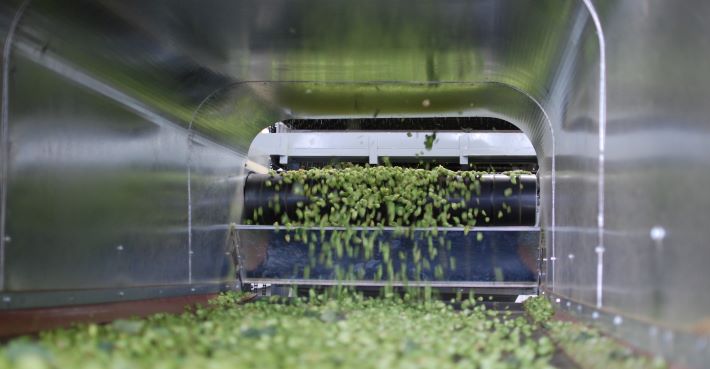
Evan Rail writes about the size of the drink industry’s carbon footprint. Huge. “But don’t despair,” he writes, “there are ways to fix the carbon impacts of the drinks we love.”
And if this report is to be believed, beer drinkers are willing to help. In a survey of 3,500 drinkers, almost half said they would pay up to 30 percent more for a more sustainably produced beer.
More than 60 percent said “that the sustainability of their beer now directly affected their choices in pubs, bars and supermarkets. 80 percent believe that reducing waste is relevant to sustainable beer production, 76 percent cite a reduction in energy and 63 percent also note the importance of reducing water use.”
Pardon my skepticism, but a 30 percent increase makes a $7.50 pint (when you can find one at the price) at $9.75 pint. What if the question had been put to them that way? I am reminded about discussions with hop merchants and their efforts to sell more sustainable hops. “In our experience, brewers are interested in the information and want to support the general notion of sustainability. But, it’s a very rare brewer/brewery that will actually let this influence what varieties they use,” said Indie Hops co-founder Jim Solberg.
TAKING THE BAIT
Jeff Alworth writes that he is setting “set forth compiling a modern-day version of the Book of Lists here, on the subject of beer.” Is he serious, is this different from listicles like one about “overrated hazy IPAs” linked to below? But he started with hops, so how can I not comment?
I’m not above trying these exercises in the privacy of my mind, or even within a group of drinking companions. I get asked what my favorite hop might be all the time. Once, nearly six years ago, Jeff and I were in a group sharing beers at the Benedictine Brewery below the Mount Angel Abbey. I came up with a list of the “most significant” hops in history, based on the influence they played across time. (Sounds presumptuous, doesn’t it?)
I am not going to comment on his best 10 hop by hop. Fact is, Motueka (on his list) was one of the hops friends and I used brewing a batch of beer Saturday, and we would have included Strisselspalt (also on the list) if it weren’t so hard to find. But a list with Perle and without Centennial or Hersbrucker? I’m disappointed.
LEDE OF THE WEEK
I took my son to his first brewery when he was 11 days old.
It was November 2020. After nine months of not drinking and many months of being stuck at home during the (remember?) international pandemic, I was beyond thrilled to sip a beer in public.
We carefully packed our infant into his carseat, brought two too many bags of supplies and made the five-minute car ride to Holy City Brewing. Does an Overly Friendly IPA taste better after nine months of sobriety, or is it always that good? The answer, I found, didn’t really matter. I had successfully become a mom who could have a little fun with a baby in tow.
— From Why I bring my child to breweries
QUOTE OF THE WEEK
“Let’s be honest. We all know that (both chemically and culturally) beer attracts, induces, comforts and/or reveals the asshole.”
— Alan McLeod, in his weekly Beery News Notes
YOU MIGHT ALSO ENJOY
– French Twist: Colorado’s Outer Range Opens Outpost in Alps
Striking mountain ranges are not the only difference. “In Colorado, we’ve reduced the production of our double IPA and our lager program is taking off. But here in France, people want hazy IPAs and we can’t keep our double IPA in stock!”
– AI art in the beer industry
Here is the optimistic view: “[AI is] a cheap, quick and unsatisfactory solution to a complex problem. The ‘problem’ being; how to make things look nice. Ultimately, that’s what art and design boils down to and, certainly from the examples I’ve seen, AI cannot generate that.”
– How a Monk Helped Make Minnesota Moonshine During Prohibition
Distill like a monk (wink, wink).
– Haze hate.
Show some guts. Name names.
– Village microbrewery wins battle with drinks giant over its name
You may or may not run into a pay wall for this one. Bottom line, David triumphs against Goliath, with Dark Sky Brewery being David and Campari and Skyy Vodka being Goliath. An interesting common sense observation from the judge: “The applicant’s goods are a long drink, likely to be consumed slowly, whereas the opponent’s goods are a short drink, likely to be consumed as a shot or mixed with a soft drink to create a long drink.” Never underestimate the power of a long drink.